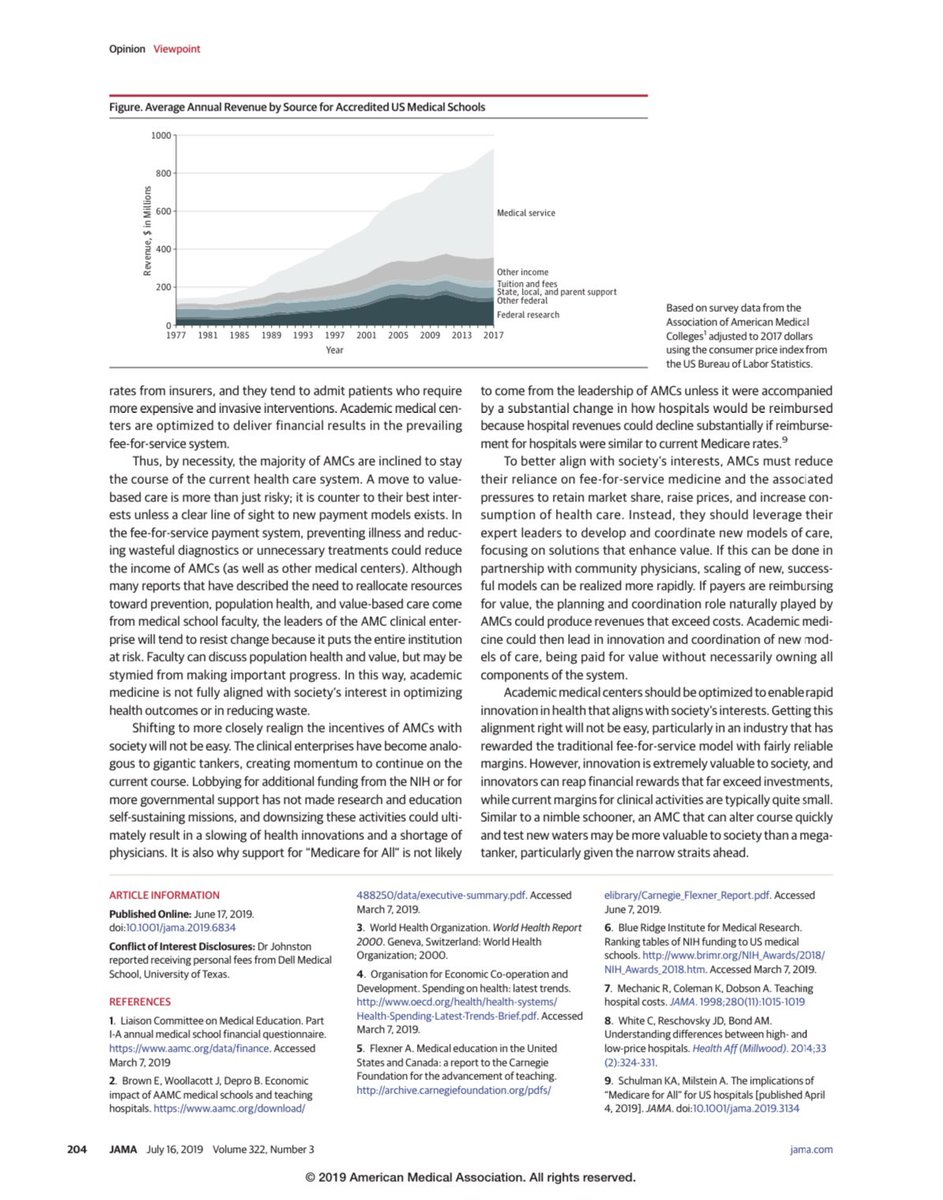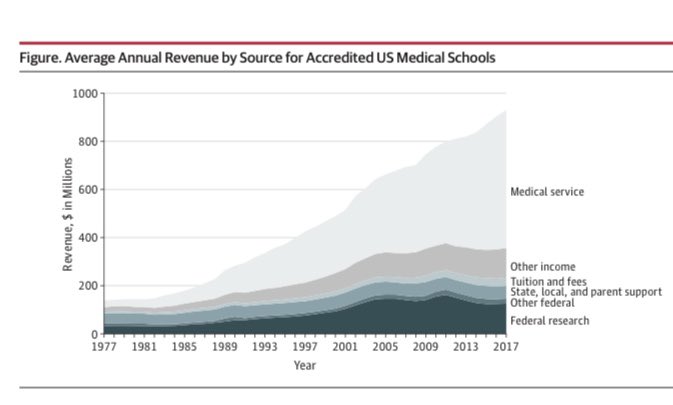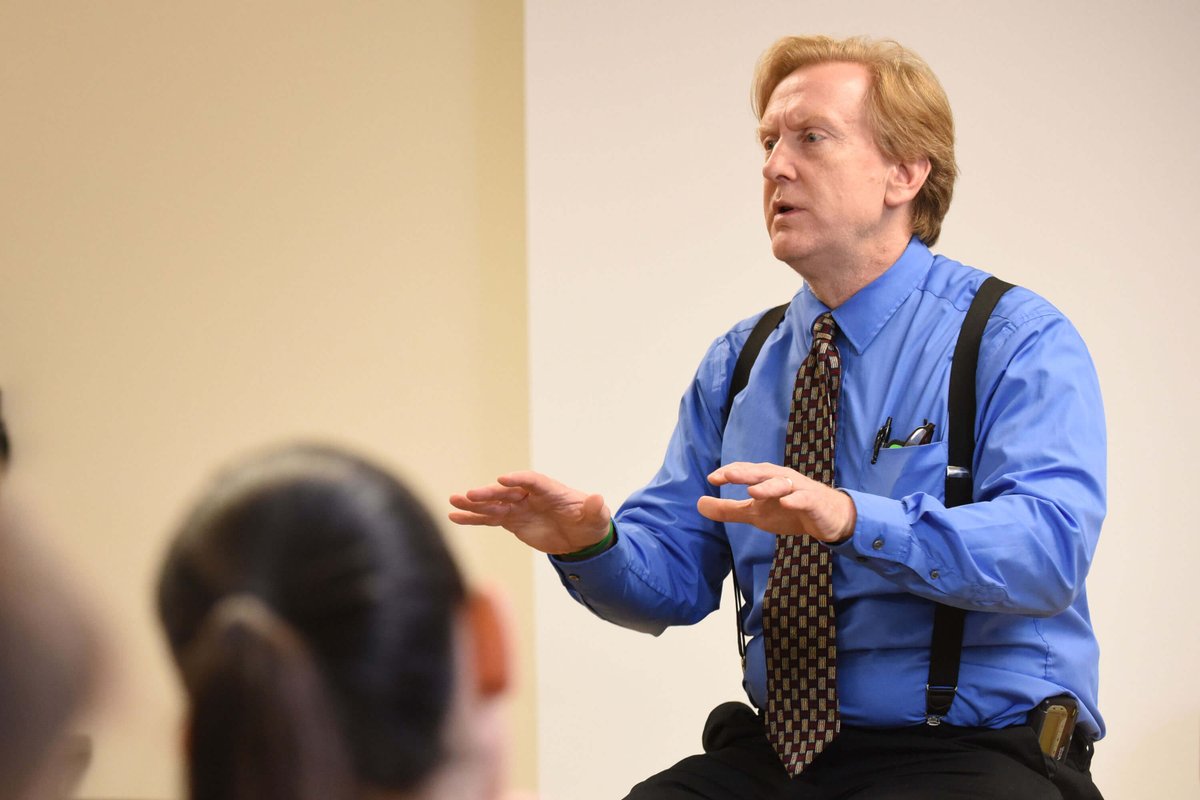
The two biggest challenges to #RadEd over past 20 years have become institutionalized in academic medicine, but their rise was so gradual that most don’t see them as barriers. So why are they a problem?
Because they separate academic radiologists from their residents.
Because they separate academic radiologists from their residents.

@benwhitemd @EKKpdx @MonicaSheth @JRobbinsMD @RichDuszak @chrisho_md @AnnJayMD1 @TKrad_md @docroc99 @uyedajen The massive growth and influence of these two enterprises has been slowly robbing trainees of their most precious educational resource: time with educators. They also may be stealing away the *incentive* for faculty to teach, which can be just as important.
2/X
2/X
@benwhitemd @EKKpdx @MonicaSheth @JRobbinsMD @RichDuszak @chrisho_md @AnnJayMD1 @TKrad_md @docroc99 @uyedajen What makes radiology education tick isn’t so much about a comprehensive noon conference curriculum or subscriptions to online question banks or free iPads for the residents...
At its core, great education depends on the relationship between trainees and educators.
3/X
At its core, great education depends on the relationship between trainees and educators.
3/X
@benwhitemd @EKKpdx @MonicaSheth @JRobbinsMD @RichDuszak @chrisho_md @AnnJayMD1 @TKrad_md @docroc99 @uyedajen And like any relationship, it requires an investment of time, effort, and trust from both sides. You have to make mistakes & give yourself the opportunity to be corrected. There’s just no shortcut. And if either member fails to put forth the effort, then education suffers.
4/X
4/X
@benwhitemd @EKKpdx @MonicaSheth @JRobbinsMD @RichDuszak @chrisho_md @AnnJayMD1 @TKrad_md @docroc99 @uyedajen And so this is the pinch that residents are in. The AMC & the ACGME have infiltrated academic medicine so slowly that we don’t recognize them as barriers standing between trainees and academic radiologists.
To illustrate this, we need a bit of historical context.
5X
To illustrate this, we need a bit of historical context.
5X
@benwhitemd @EKKpdx @MonicaSheth @JRobbinsMD @RichDuszak @chrisho_md @AnnJayMD1 @TKrad_md @docroc99 @uyedajen In the early 20th Century, in response to the growing number of substandard for-profit medical schools, the Carnegie Foundation sponsored Abraham Flexner to conduct a comprehensive evaluation of all US medical schools.
6/X
6/X

@benwhitemd @EKKpdx @MonicaSheth @JRobbinsMD @RichDuszak @chrisho_md @AnnJayMD1 @TKrad_md @docroc99 @uyedajen This culminated in the 1910 publication of the Flexner Report, which substantially raised the standards of #MedEd in the US & placed our country on its current path w/ medical schools closely tied to universities & the quest for scientific knowledge at the heart of medicine.
7/X
7/X

@benwhitemd @EKKpdx @MonicaSheth @JRobbinsMD @RichDuszak @chrisho_md @AnnJayMD1 @TKrad_md @docroc99 @uyedajen Flexner established the tripartite mission of academic medicine as we know it today, encouraging medical school faculty to oversee not just scientific discovery, but also medical student education and the clinical care of patients.
8/X
8/X
@benwhitemd @EKKpdx @MonicaSheth @JRobbinsMD @RichDuszak @chrisho_md @AnnJayMD1 @TKrad_md @docroc99 @uyedajen But a central tenet to Flexner's model was that medical schools must provide faculty adequate salary so fees generated from patient care wouldn't distract them from their research. Flexner actually recommended that faculty receive no fees from clinical care.
9/X
9/X
@benwhitemd @EKKpdx @MonicaSheth @JRobbinsMD @RichDuszak @chrisho_md @AnnJayMD1 @TKrad_md @docroc99 @uyedajen Flexner's model of #MedEd met w/ considerable financial difficulty over its first 40 years, as schools were forced to rely upon support from philanthropic organizations, donations from wealthy donors, and financial gifts from the families of wealthy students.
10/X
10/X
@benwhitemd @EKKpdx @MonicaSheth @JRobbinsMD @RichDuszak @chrisho_md @AnnJayMD1 @TKrad_md @docroc99 @uyedajen Dramatic changes occurred in the 1960s. Massive NIH funding for medical research came to the rescue of medical schools, underscoring the need to recruit talented physician-scientists. For the next 30 years, academic medicine encouraged research with the lure of tenure.
11/X
11/X

@benwhitemd @EKKpdx @MonicaSheth @JRobbinsMD @RichDuszak @chrisho_md @AnnJayMD1 @TKrad_md @docroc99 @uyedajen Yet at the same time that NIH funding helped to strengthen the Flexnerian influence on #MedEd, another event occurred that would lead to its eventual demise: the funding of Medicare and Medicaid in 1965.
12/X
12/X
@benwhitemd @EKKpdx @MonicaSheth @JRobbinsMD @RichDuszak @chrisho_md @AnnJayMD1 @TKrad_md @docroc99 @uyedajen With the introduction of Medicare/Medicaid, followed later by private insurance, medical schools saw substantial increases in revenues from faculty clinical services. By the 1990s, many institutions were already hiring academic faculty on a non-tenure or clinical track.
13/X
13/X
In an opinion piece for @medpagetoday, Milton Packer discusses this transition:
“Medical schools thought they could recreate their business models by incentivizing their clinical faculty to grow their practices and referral base.”
14/X
medpagetoday.com/blogs/revoluti…
“Medical schools thought they could recreate their business models by incentivizing their clinical faculty to grow their practices and referral base.”
14/X
medpagetoday.com/blogs/revoluti…
“Now, even at the most academic of schools, the clinical faculty are often paid directly by health systems, their salaries depend on their ability to generate fees, not research papers, & their time is managed by...service line administrators rather than dept chairs.”
15/X
15/X
“If you think that medical schools are exemplars of a bustling and productive environment for teaching, innovation, and patient care, you are living in the wrong century. Traditional medical schools represent a money-losing relic of an honorable past.”
M. Packer
16/X
M. Packer
16/X
Clay Johnston, Dean of the @DellMedSchool at UT Austin, wrote in JAMA that:
“Among the 141 fully accredited medical schools in the US...most operate clinics & own hospitals, forming academic medical centers (AMCs). 56% have annual operating budgets over $500 million.”
17/X

“Among the 141 fully accredited medical schools in the US...most operate clinics & own hospitals, forming academic medical centers (AMCs). 56% have annual operating budgets over $500 million.”
17/X


“Growth of the clinical enterprise has allowed academic medicine to maintain its research & education missions in the face of relatively stagnant funding from the NIH. In fact, the margins on clinical revenues are used to cover deficits in budgets for research & education.”
18/X
18/X
“Average clinical revenues for medical schools have increased to $573 million as of 2017 and account for 62% of total revenue.”
Johnston SC. Academic Medical Centers: Too Large for Their Own Health? JAMA, 2019;322:203-4.
19/X
Johnston SC. Academic Medical Centers: Too Large for Their Own Health? JAMA, 2019;322:203-4.
19/X

“There is the crux of the issue: any changes threatening the margins from clinical care will affect the entire mission of the AMC.”
S. Claiborne Johnston
20/X
S. Claiborne Johnston
20/X
What’s clear today is that the balance of the 3 major missions of academic medicine —education, research, & clinical care—has changed drastically over the past 30 years, driven mostly by incentivizing academic physicians to pursue clinical reimbursement.
21/X
21/X
Medical schools no longer prioritize the Flexnerian pursuit of scientific knowledge. Instead, they favor a new hidden mission that you're not likely to find in any of their marketing – one that prioritizes the use of faculty to generate clinical revenue.
22/X
22/X
The Flexner era of medical education is officially over. We've entered a new age dominated by the AMC.
While it still pays for orgs to market themselves as obedient to the tripartite mission, the implicit mission of acad medicine is driven by pursuit of clinical revenue.
23/X
While it still pays for orgs to market themselves as obedient to the tripartite mission, the implicit mission of acad medicine is driven by pursuit of clinical revenue.
23/X
What’s going to determine the future of radiology education is whether academic radiologists are given the time & incentives to do the work that inspired them to academics in the first place.
Or whether they’ll be distracted by the competing vision of today’s AMCs.
24/X
Or whether they’ll be distracted by the competing vision of today’s AMCs.
24/X
As academic radiologists have moved to the service line over the past 20 years, program directors have scrambled to shore up instruction for trainees. Lecture videos, online cases, and "universal curricula" are just some resources that have been used to fill the gaps.
25/X
25/X
Richard Gunderman cautions: “The more we go down a path that the real genius of education is the curriculum, the more divorced we become from the true element of genius in education, which is an educator who really understands what learners need to know.”
stitcher.com/s?eid=59143242…
stitcher.com/s?eid=59143242…

For the time being, we'll continue to rely on
@RadiologyChairs and other #RadLeaders to recognize the vital importance of #RadEd by protecting faculty teaching time. Healthcare reform may someday change incentives to better align with the education mission.
Finish.
@RadiologyChairs and other #RadLeaders to recognize the vital importance of #RadEd by protecting faculty teaching time. Healthcare reform may someday change incentives to better align with the education mission.
Finish.
• • •
Missing some Tweet in this thread? You can try to
force a refresh



